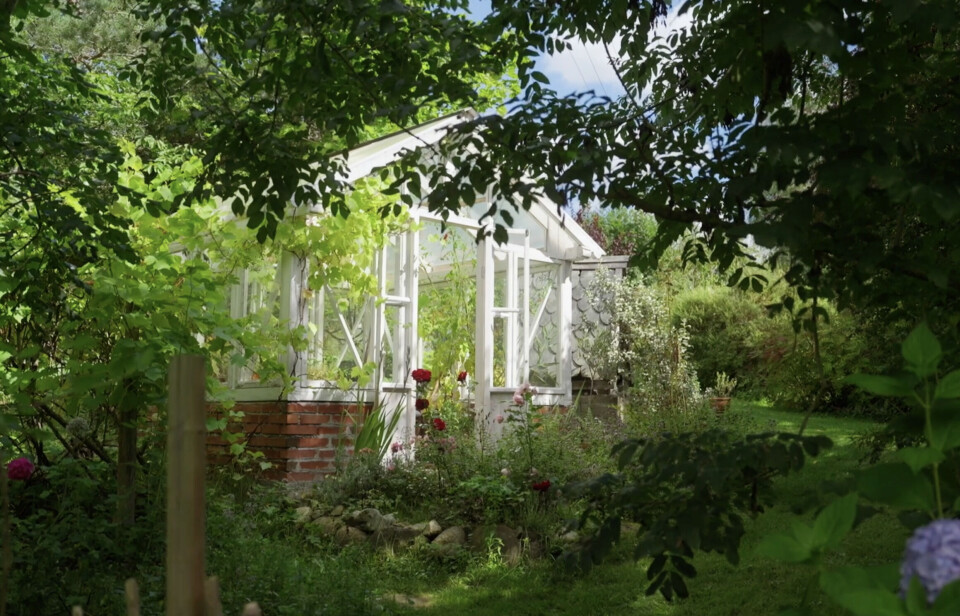THIS CONTENT IS BROUGHT TO YOU BY the University of Bergen - read more
Norwegian gardens have become sterile lawnscapes
Norwegian gardens have gone from being full of fruit and berries to becoming flat lawns with trampolines and gas grills.

“For many people, the garden has become an extension of their house – with thuja hedges as walls and lawns as floors. That’s not good for biodiversity,” says Kyrre Kverndokk.
He is a professor of cultural studies at the University of Bergen and the academic lead behind the new documentary Paradisets bakside (The flip side of paradise).
The documentary is based on the research project Gardening the Globe and is available with English subtitles. In the project, researchers explore how everyday practices like gardening are connected to broader landscape changes and loss of biodiversity.
Gardens have turned into consumer spaces
Norwegians have less time, go on more vacations, move house more frequently, and go through more breakups than a few decades ago.
According to researchers, these are some of the reasons why many Norwegian gardens have evolved into sterile lawnscapes.

“In the past, edible plants dominated Norwegian gardens. Now, gardens have less utilitarian aspects, while the recreational aspects have started to take up more space – with lounge furniture, wooden decks, gas grills, and trampolines. There are fewer fruit trees and berry bushes, and vegetable patches have, at best, been replaced by raised beds,” says Kverndokk.
The documentary shows that many modern gardens are designed with resale value in mind, not nature.
Clean lines, neatly trimmed lawns, large seating areas, and manicured plantings are the norm. People are inspired by luxury resorts and shop extensively at garden centres.
But it is not just the consumption of outdoor furniture and other mass-produced goods that has increased. The use of water, fertiliser, and plants has also risen significantly.
“There are quite a few Norwegians who genuinely want to grow perennials, shrubs, and trees, but they struggle because conditions are poor. Many modern gardens are built on plots that are levelled with rock and gravel, and topped with a thin layer of nutrient-poor soil. The result is high consumption of various inputs such as water and fertilisers,” says Kverndokk.
Norwegian gardens have, in other words, become simpler in appearance, but more resource-intensive than the old gardens.
“Many people who dream of a lush garden end up facing poor soil and demanding conditions,” he says.
What we do with our garden matters
Private gardens likely cover bigger land masses than cultivated farmland in Norway. Therefore, it matters greatly what is – or isn’t – planted in the gardens of ordinary Norwegians.
“When lawns and patios take over, biodiversity naturally declines, which reduces habitats for pollinating insects,” says Kverndokk.
He has, however, observed a counter-reaction to the neatly trimmed trampoline garden in recent years.
“We see this counter-reaction in various campaigns led by for instance WWF Norway, where people are encouraged to turn their lawns into wildflower meadows,” he says.
Kverndokk says Norway is in a dramatic period of landscape changes and biodiversity loss. He hopes the new documentary will prompt garden owners to reflect on their own practices. He offers several concrete tips:
“Go for a more diverse range of plants, let the lawn grow in spring, avoid pesticides, use organic fertiliser, avoid invasive plant species with high risk of spreading, and consider where decorative stones and other garden elements come from. Stones used in flower beds may be a result of major landscape alterations elsewhere on the planet,” he says.
The documentary is in Norwegian, but viewers can enable English subtitles.

This content is paid for and presented by the University of Bergen
This content is created by the University of Bergen's communication staff, who use this platform to communicate science and share results from research with the public. The University of Bergen is one of more than 80 owners of ScienceNorway.no. Read more here.
More content from the University of Bergen:
-
Researcher: Politicians fuel conflicts, but fail to quell them
-
The West influenced the Marshall Islands: "They ended up creating more inequality"
-
Banned gases reveal the age of water
-
Researchers discovered extreme hot springs under the Arctic
-
Tiny particles unlock vinegar’s hidden healing potential
-
“Why doesn't it rain more?” asks researcher




































